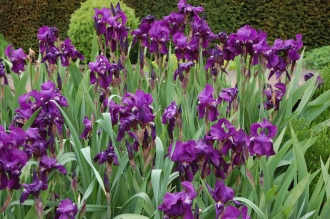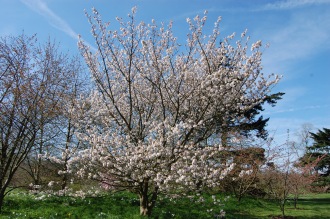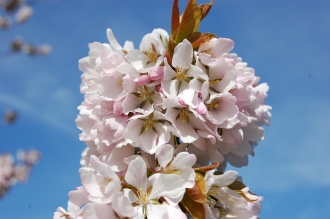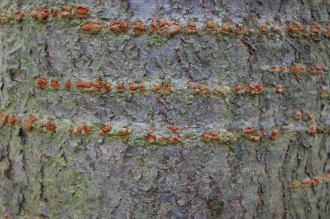Position: Full sun to light shade
Flowering period: Late spring to early summer
Soil: Moist, well drained
Eventual Height: 1m
Eventual Spread: 50cm
Hardiness: 3a, 3b,, 4a, 4b, 5a, 5b, 6a, 6b, 7a, 7b, 8a, 8b, 9a
Family: Iridaceae
Iris germanica is a semi evergreen, erect, herbaceous perennial with a clump forming habit. Its gray/ green leaves are lanceolate with entire margins and gradually narrowing to a point, erect, emerging from its rhizome and up to 40cm long and 4cm broad at their base. Its purple/ mauve hermaphrodite flowers emerge from a branched stem which emerges from the base of the leaf cluster and is up to 90cm tall. Its fruit is a loculicidal capsule. Its roots are rhizomes which allow this plant to steadily spread.
The Iris germanica, commonly known as Wild Bearded Iris, Purple Flag Iris or the Bearded German Iris, is a natural European hybrid. In its native habitat it grows in dry rocky habitats.
The etymological root of the binomial name Iris is derived from the Greek word for a rainbow, referring to the wide variety of flower colours found among the many species. Germanica is from the Latin meaning ‘from Germany’.
The landscape architect may find Iris germanica useful as an effective spreading ground cover plant with showy flowers.
Ecologically, Iris germanica is attractive to bees and pollinating insects.
Iris germanica prefers moist, fertile, well-drained soils. It tolerates most pH of soil, and will tolerate very alkali soils.
Iris germanica requires little maintenance. Large clumps may be divided, this should be carried out up to six weeks after flowering.











